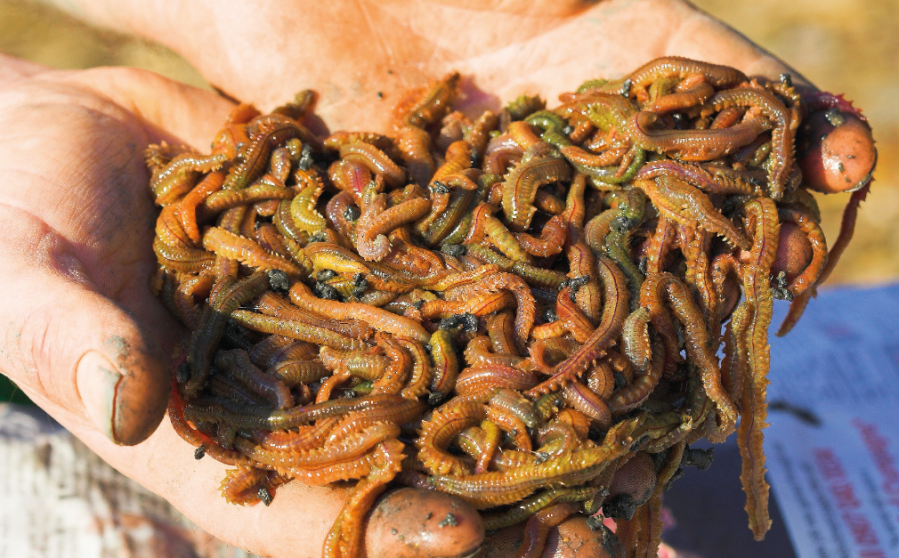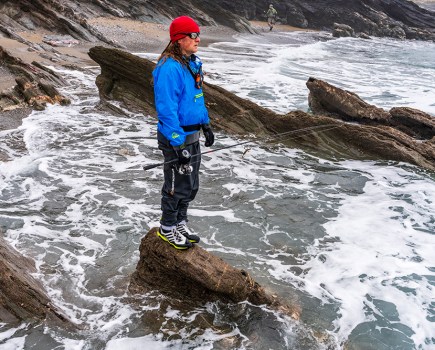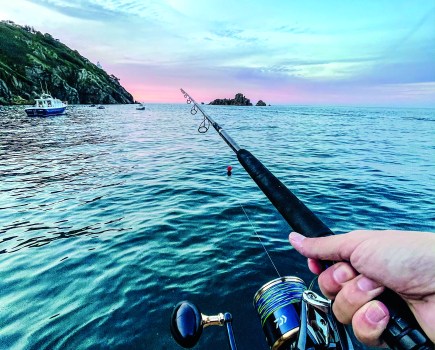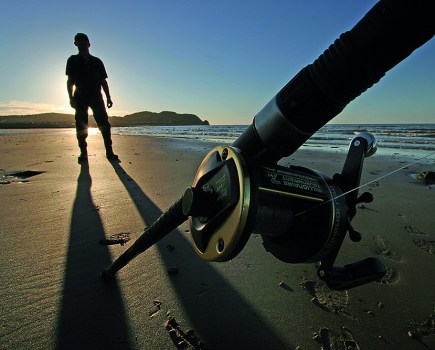Although lugworm, king ragworm and white ragworm are regarded as good baits when targeting flounder, there is little doubt that in an estuary environment, harbour ragworm, or ‘maddies’, are widely considered the ‘steak and chips’ of the flounder’s diet. One hundred and sixty eight all-round sea anglers across South Wales were asked to consider the following question: “Forget the age-old saying “lugworm in winter and ragworm in summer” – if you had to pick just one species of worm to use exclusively for the rest of your fishing career, which one would you choose?” Their responses were as follows: 10 per cent chose harbour ragworm; 12 per cent chose lugworm and 78 per cent chose king ragworm. Shore and boat anglers in different regions of the UK may or may not agree with these responses because different types of worm species may be more effective in their respective areas and types of venues.
The data, shown in the box below, suggests that to win a flounder competition for the heaviest bag, we should use harbour rag as bait but lugworm will probably win us the prize for the heaviest fish. Why then is harbour rag so effective at catching flounder in the relatively sheltered tidal pills (creeks) in the middle regions of an estuary? This is because in most estuaries the greatest population of harbour rag normally occurs in the middle regions, with their numbers decreasing both towards the upper end and towards the mouth of the estuary.
Sandbanks in the entrances of the estuaries are particularly mobile making it difficult for worm beds to become established. Furthermore, the greatest number of harbour rag are found in the stretch of the estuary with the greatest variation in salt concentration: that is the middle region, and beds of harbour rag are normally established where the tidal strength is very weak and where the exposure to waves is extremely sheltered.
At the end of an open flounder competition on the Green Banks of the Loughor estuary, 120 anglers were asked about the type of bait they had used and their catch outcome. The findings were as follows:
Type of bait the angler used on the day % of anglers
- Harbour rag; lugworm 46
- Harbour rag; lugworm; crab 25
- Harbour rag; lugworm; king ragworm 9
- Harbour rag only 18
- Lugworm only 2
The number of flounder caught was 256 of which:
- 244 (95.3%) were caught when harbour rag was the only bait on the hook
- Six were caught when lug was tipped with harbour rag
- Six were caught when lug was the only bait on the hook
- The four heaviest flounder were caught with lugworm as the only bait
- 26 per cent of anglers failed to catch any fish
Light Levels
Spawning, migrations and tidal movements make worms more accessible to foraging fish and luckily for the angler a more plentiful supply of worms within the intertidal zone. Predominately visual feeders, flounder can move their eyes independently, constantly swivelling to provide all-round vision. They also have a form of system running along the sides of their head and body which can detect stimuli such as vibration and pressure from the surrounding water.
During daylight one of the most important features when fishing for flounder is that these very inquisitive fish are acutely attracted to prey movement and that the more active the prey then the greater the chances are of attracting the fish which is one reason why large bunches of lively, wriggling harbour ragworm are such an effective bait.
Although flounder have been recorded to migrate vast distances in order to spawn, they rarely enter deep seas and average migration distances are less than 20 miles. They travel at three to four miles each day and generally do not feed on route. They are usually most common within 50yds of the water’s edge, but the distribution is localised within specific areas and they are frequently as close as 5-10yds. Typically surging into the newly covered areas with the incoming tide, they feed heavily during high tide. They move at slow pace in small shoals following the current, each shoal trailing another at intervals of about 150 yards.
Flounder use several sensory features to detect and capture prey in turbid estuarine waters – prey movement during daylight and another crucial sensor – scent during the dark. The name “flounder” comes from the Dutch word “flodderen” which means “to flop about” – a practice flounders do on the bottom of the seabed kicking up sand to cover themselves. Although the water turbidity reduces the distances at which the flounder’s prey can be seen, predation can in fact increase with turbidity because the worms don’t bury themselves so deeply and the flounder’s other sensory systems come into play.
Sampling of flounders throughout 24 hours have shown that their stomachs are filled during high-tide periods on intertidal mudflats, irrespective of whether high tide occurs by day or night and most have empty stomachs at low tide. Harbour rag spawn during the period of a new or full moon, the male worms turn bright green and release their sperm while swarming in the water above the burrows which contain the females. At this time they will be readily caught and eaten by fish. The male worms swim in a curious manner with the front part of the body held out stiffly and the back end wriggling, rather like some of the modern, soft plastic “sand eel” lures. Ragworm are constantly subjected to the risk of predation by fish, so they withdraw into their burrows but the time spent in the burrow is lost for feeding so it is important that they are able to distinguish between harmless and harmful threats.
The “out of burrow activities” of harbour ragworm are reduced when exposed to fish-borne biological warning signals coming from flounder and flounder mucous, so they take swift evasive action from this threat whenever possible. Burrowing worms obtain nourishment by filtering food from passing water currents and seem to know when the tide is flooding thereby moving upwards in anticipation of a supply of fresh seawater. But this means that the worms are blatantly vulnerable when feeding, particularly when the incoming tide begins to cover the worm beds and also at high tide since flounder will cruise along the shore to feed on them when the worms come out of their burrows to feed. Worms leave their burrows far more often during darkness than they do during daylight hours.
DR MUNRO’S TIPS: HOW TO CATCH MORE ESTUARY FLOUNDER
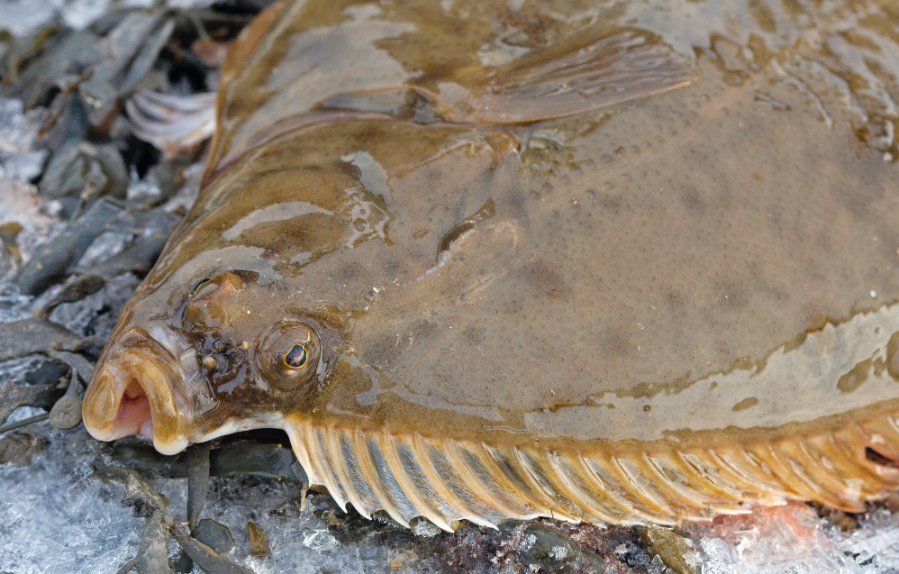
The best time for catching flounder is at the start of the tidal flow of a NEAP tide (fish are hungry) and at top water (worms leave their burrows) and midway down the back-water (fish take more risks because they sense that the worm-beds are about to be uncovered by the receding tide).
- Catch rates increase significantly at night, dawn and dusk during autumn and up to mid-winter. Before fishing, mix your worm bait in peat then dry it out a little by layering it out on sheets of newspaper in a cool place. Before casting out your worm-laden hooks, briefly dip the hooked worms in the water. This prevents the worms from flying off the hooks during casting.
- Always wind in your traces using a slow retrieve so that the sea-bed deposit is disturbed thereby attracting the inquisitive flounder. Don’t over-tighten your line but leave it slack so that all three baited hooks maintain contact with the sea floor.
- Do not cast towards the flow of the tidal current since your bait will be more easily washed off the hooks. Whenever possible fish over an area of worm beds or where there are features on the sand / mud banks such as small gullies or gentle slopes.
- Don’t overcast, flounder frequently feed close to the water’s edge. Use a rolling lead weight so that the bait moves around in the water.
- Don’t strike when you see a bite, leave it for a few minutes since flounder are easily hooked and the flapping caused by a hooked fish frequently attracts a second or even a third fish when using a three-hook paternoster rig.
- Use long-shanked 1/0 hooks packed with as many harbour rag as you can get on the hook Use 6 – 8 alternating white and yellow or black and green beads on three hook paternosters with snood lengths just short enough to prevent them tangling. Attach a silver spoon above the beads on the lowest hook. The more your rig looks like a decorated Christmas tree the better!

